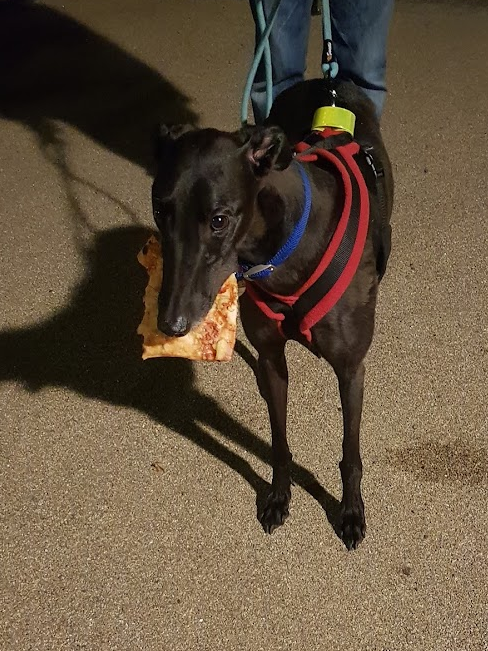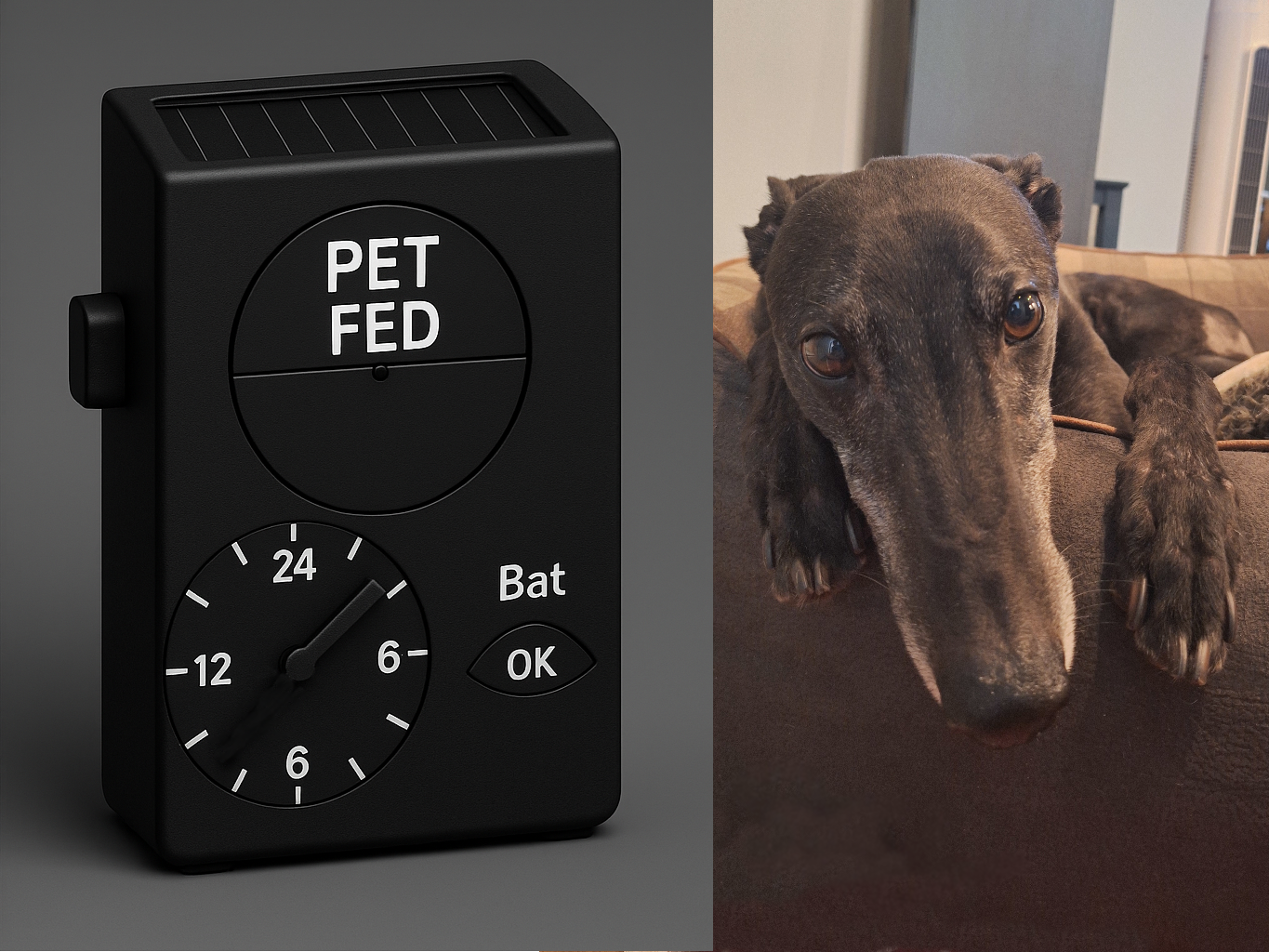Every day my wife and I have the same question: “Has the dog had its food?”
I bet it’s similar worldwide in every household with a pet, at least thought, if not spoken aloud. I have the answer!
Bosco is our ex-racing greyhound. He’ll request more strokes with a paw tap. He’ll whine to go out for a wee. But ask if he’s had dinner and his eyes will convey utter starvation and sadness – regardless of what goodies he’s had recently.
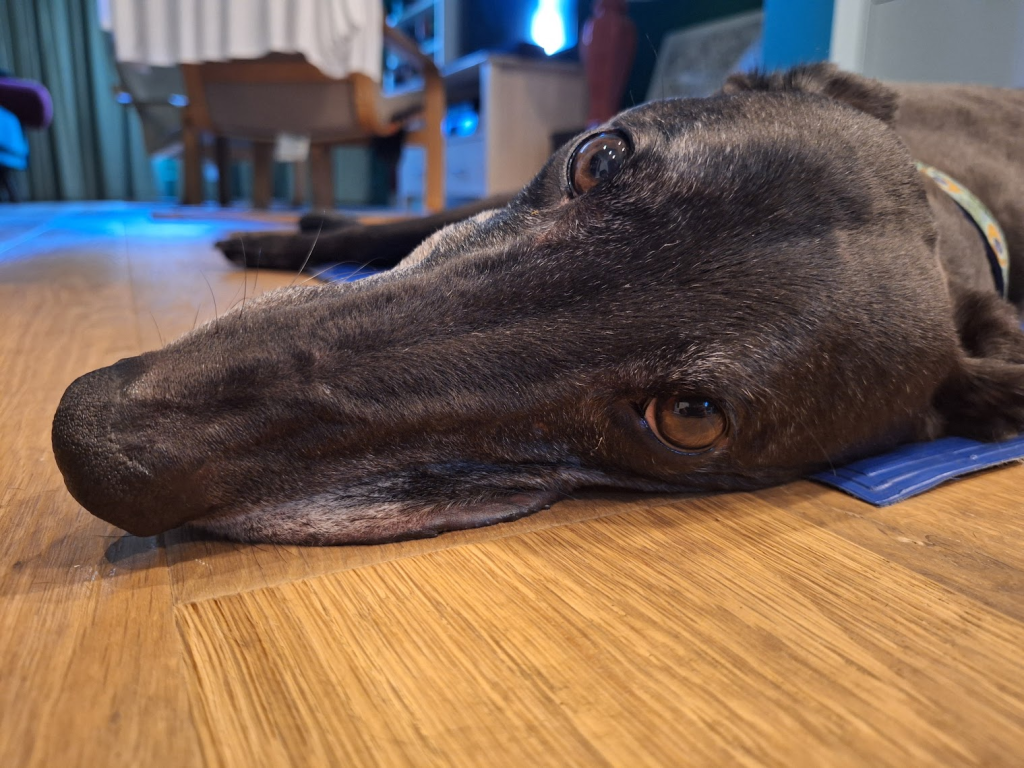
So we query each other. “Did I do it? Did you? Was that yesterday?”
It’s even worse when the other person is not there. “Did they feed him before they went out and I got home?”
“So should I feed him or not?!”
I have a product idea to overcome this dilemma.
A dog’s dinner of a sign
You may have seen flippable signs saying something like “Fed” and “Feed” on each side. You simply turn it around when the food has been dished out, to remind yourself or inform others.
However the system breaks down as the next mealtime approaches or if someone forget to flip the sign.
Then you are stood wondering
“It says ‘Fed’ but is that from this morning or this afternoon?”
“It says ‘Feed’ yet the bowl is dirty”
The risk is of under or over-nourishment.
Bosco’s gaze always longingly insists it is the former.
My pet idea
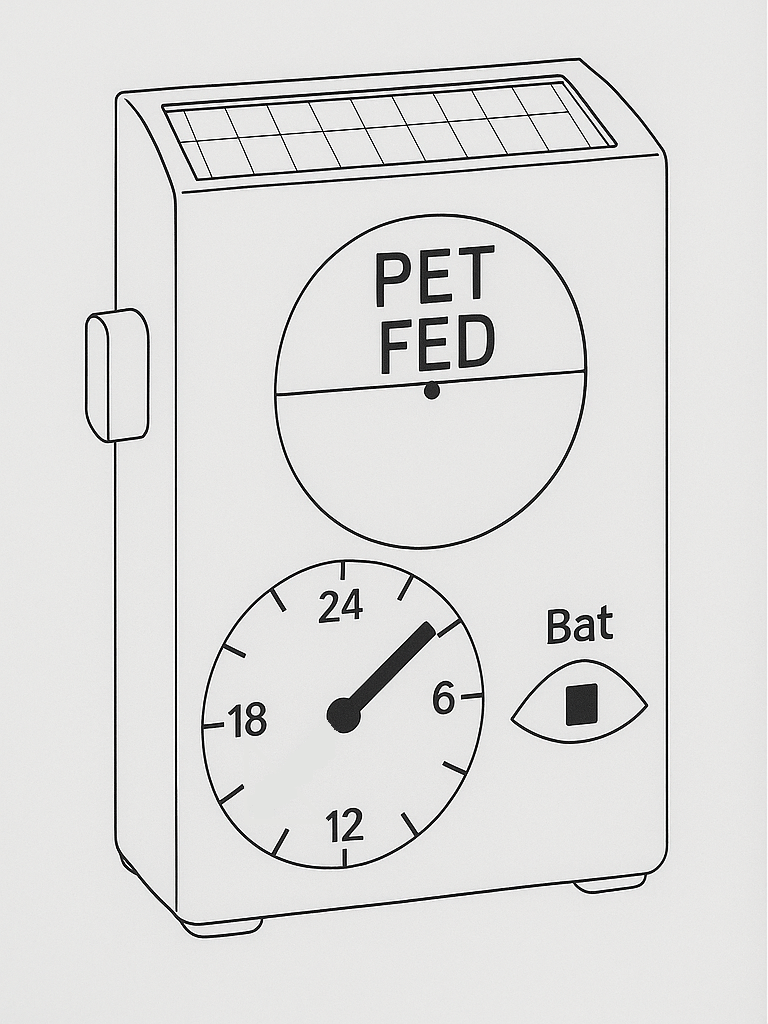
I suggest a gadget to make feeding clockwork – a combination of the flip sign and an alarm clock.
After putting out the food, you push a button to both show “Pet fed” and start a timer ticking. It will reset the display to “Feed pet” after say 12 hours.
Anyone seeing it will know that no more grub is necessary until the proper time (which will be indicated too).
Features
I imagine a small, intuitive, accessible, basic device:
- easy-to-read text and braille labels
- large tactile button and timer dial
- spinning disks to display statuses
- short audible alarm when timer expires
- solar panels with battery backup.
- can be freestanding, mounted on a wall or magnetic for putting on a fridge
Of course it’s not foolproof. Neglecting to press the button will be deceptive later and you are back to guessing. But it is better than the manual sign in half of cases.
For different animals you might want the default state to recommend serving something up – or not if that would be worse (for example goldfish).
I tried to think of icons to convey the status instead of English text, to make the gadget international. However, I struggled to devise unambiguous symbols. For example does a tick mark indicate that feeding has been done or is due?
Some households might want even more juicy features.
The souped-up version
Technology could enhance this idea for those who want it. Paired with the food bowl and linked to an app, the gadget could handle multiple pets as well as logging feeding in various ways.
This could be great for some households but is not essential for everyone. Minimal and reliable can beat fancy and complicated.
Use cases
Here are some examples of who could find such gadgets useful.
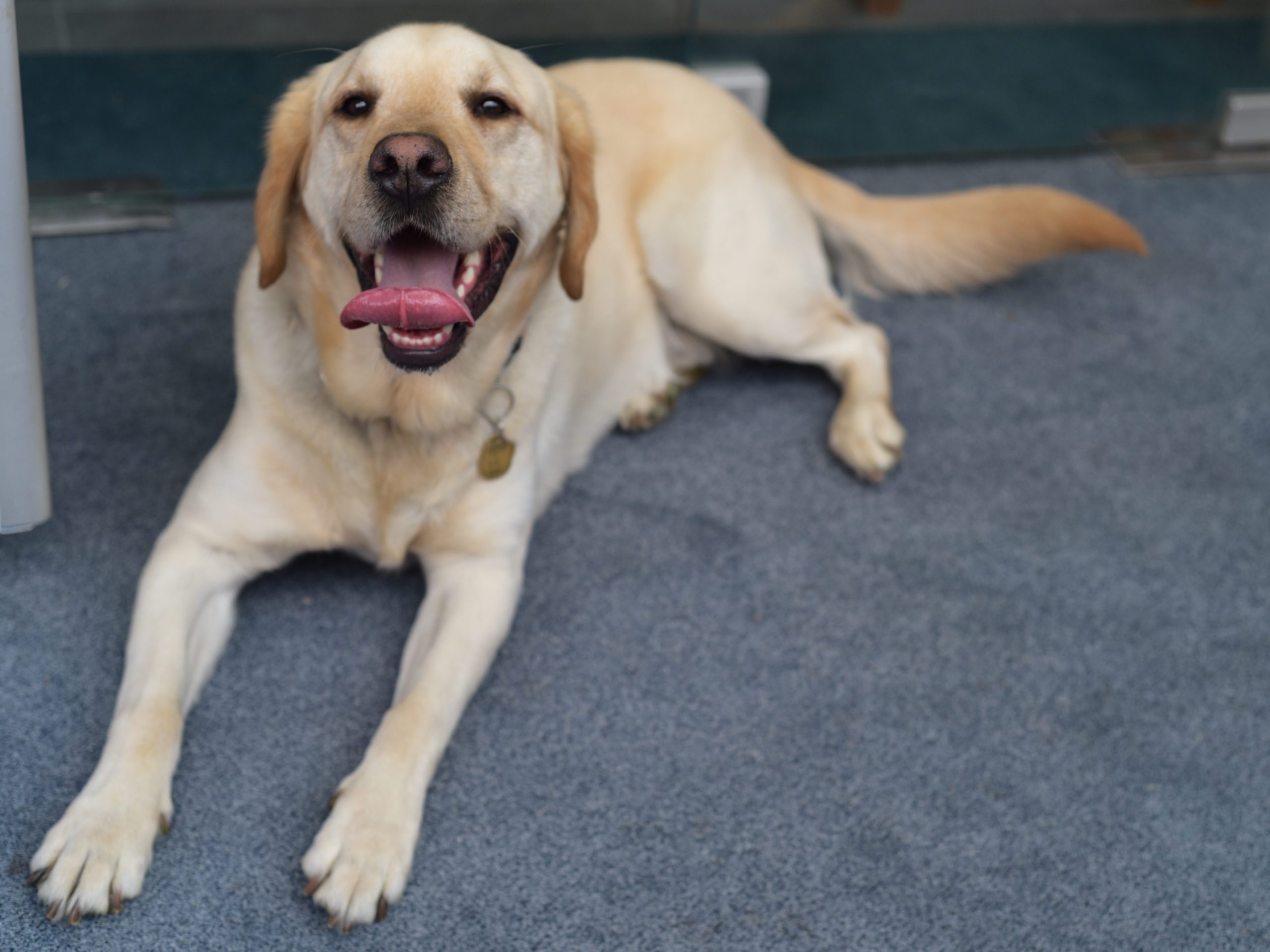
78-year Miriam is severely visually impaired and lives alone with her faithful guide dog Ben. She can be forgetful and doesn’t like modern tech much. She puts out meaty goodness for Ben at 8am and presses the gadget’s button to start the 8-hour timer.
If unsure at any time she can feel whether Ben is sated. No smartphone required. The gadget is also there for the visiting care worker to check at lunchtime.
Later the clock runs out setting off a bell. The cycle begins again. Less kibble-ing about if Miriam remembered!
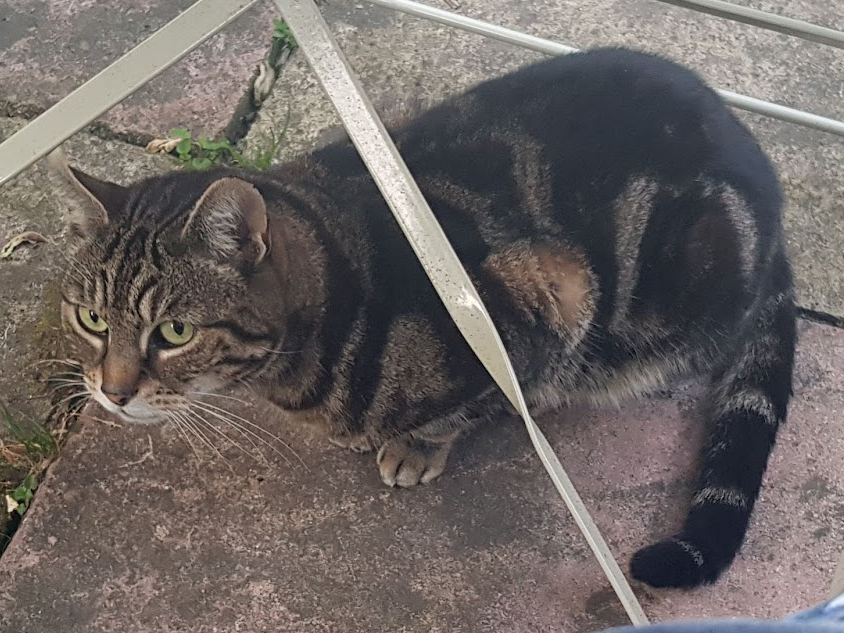
Working parents Len and Barb plus son Gary love their tabby cat Sam. They all come and go at various times. It’s hectic, they often don’t see each other. The full-fat gadget tells whoever is home, when Sam last ate. In addition, it could notify everyone about weighing scale checks that the right portion size was given, plus verify with an RFID collar, and a photo if Sam got it before that sneaky stray Pebbles! If so it would reset the display accordingly. Peace of mind and fewer arguments for all
Will I eat my own dog food?
[That’s a business phrase about using your own product to note its drawbacks]
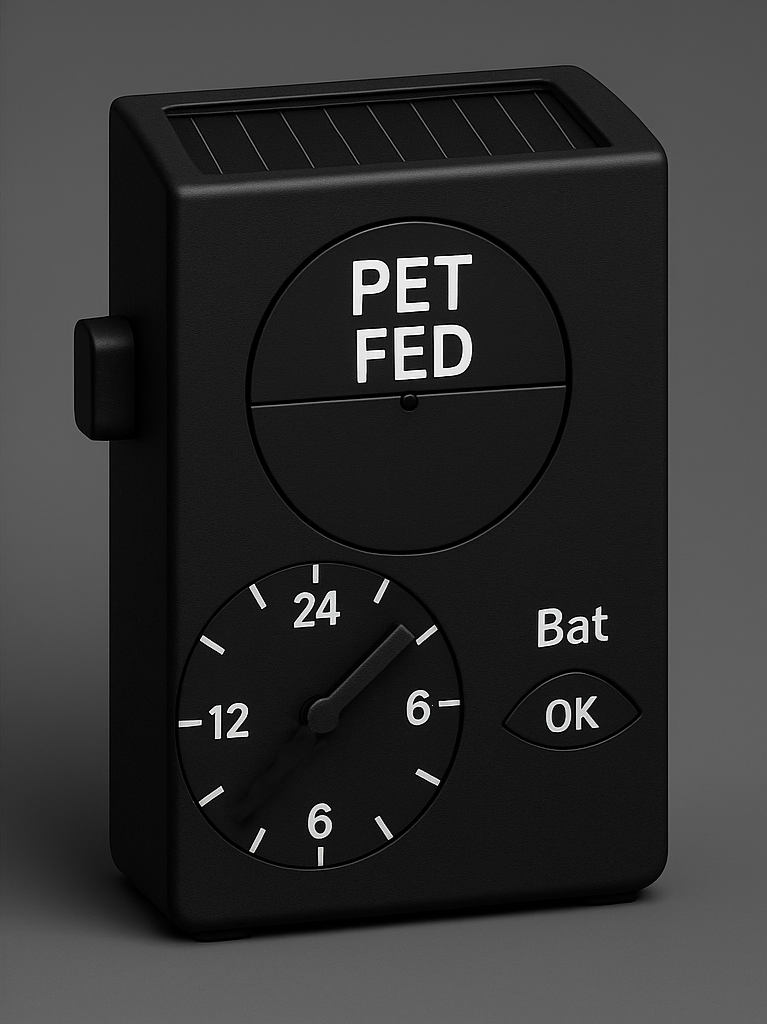
Speaking to other pet owners, they recognise the problem and that a gadget like this could be useful.
My research says there are various pricey gizmos for scheduling release of pet food and tracking when it is eaten. However, there’s no product quite like this idea on the market – displaying fed status and automatically resetting.
Hardware often fails to cater for people with sensory and dexterity disabilities. My gadget would be as accessible as possible.
I think it could make a real difference to many pet owners. Is that a big stretch?
An online task manager might do it but they don’t always cater for multiple users. Also people are prone to distraction as soon as they pick up their phone to set a status.
Every time I watch Bosco chomping away, I imagine setting the gadget for the day. Then I envisage my wife checking it later, alongside Bosco’s hopeful eyes and panting tongue.
But I’m not in a position to chase this idea down and I don’t want to sit on it.
Have you got a lead to run with it?
So I’m making this idea open-source. If you’re a maker with a 3D printer or a multinational, please explore, prototype, and sell this concept. Bosco and I would love to help develop it and have credit as the inspiration. Wanna play ball?
Your thoughts?
Add a comment with your ideas and opinions.
- Would you like a “Pet Fed” gadget in your home and why?
- What features would you want?
- Is there another solution to this challenge?
- What are your brilliant product ideas — I’d love to hear them
